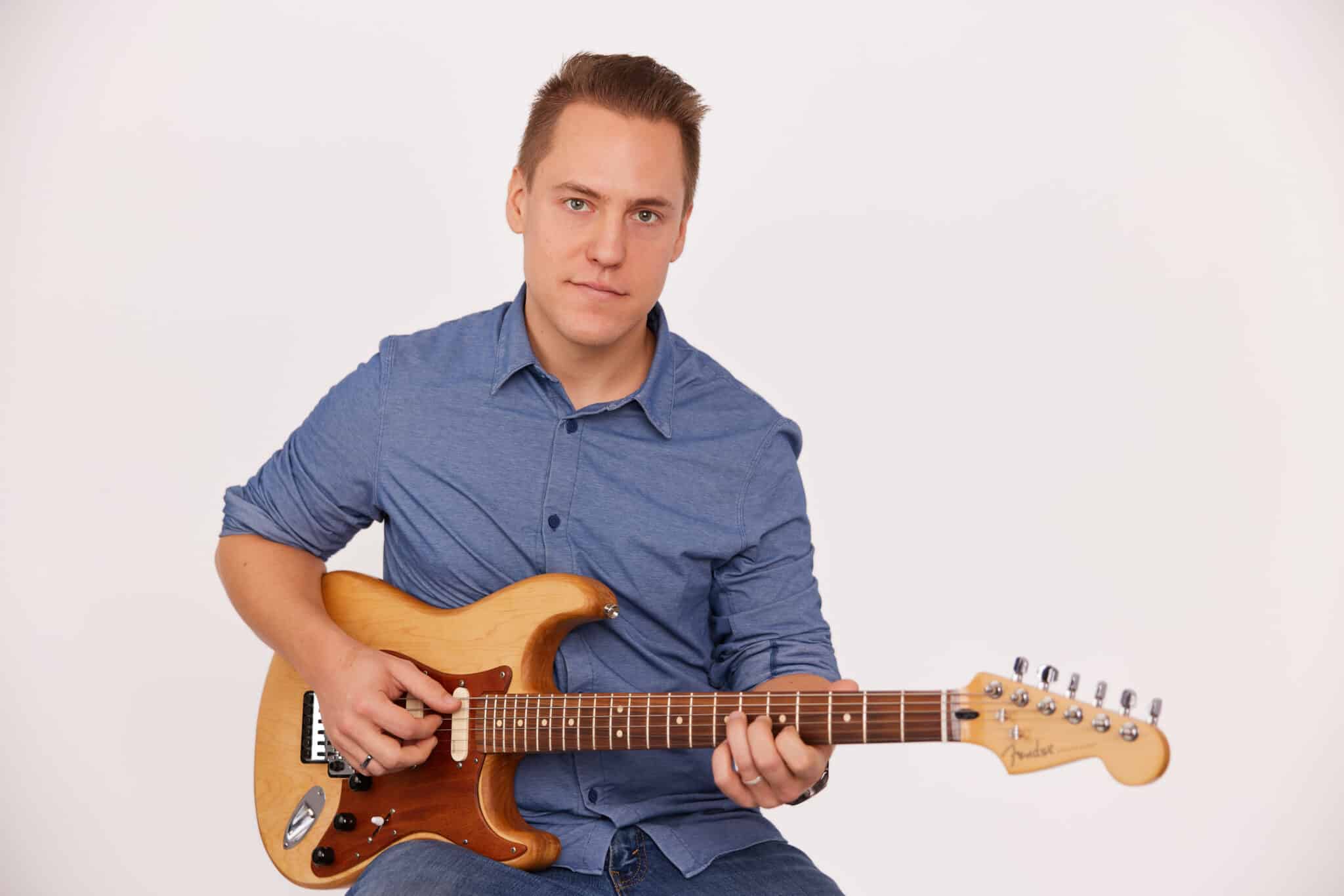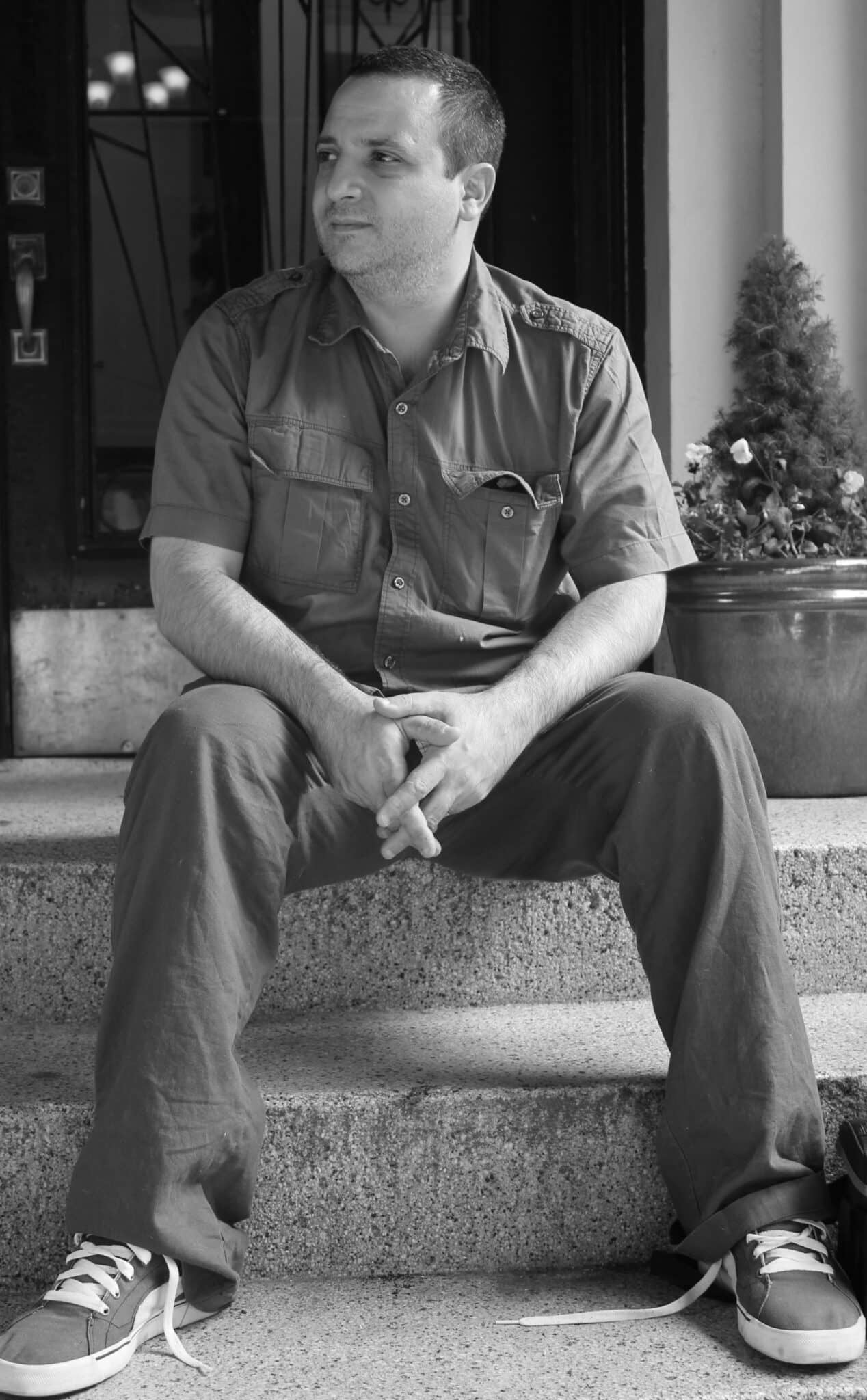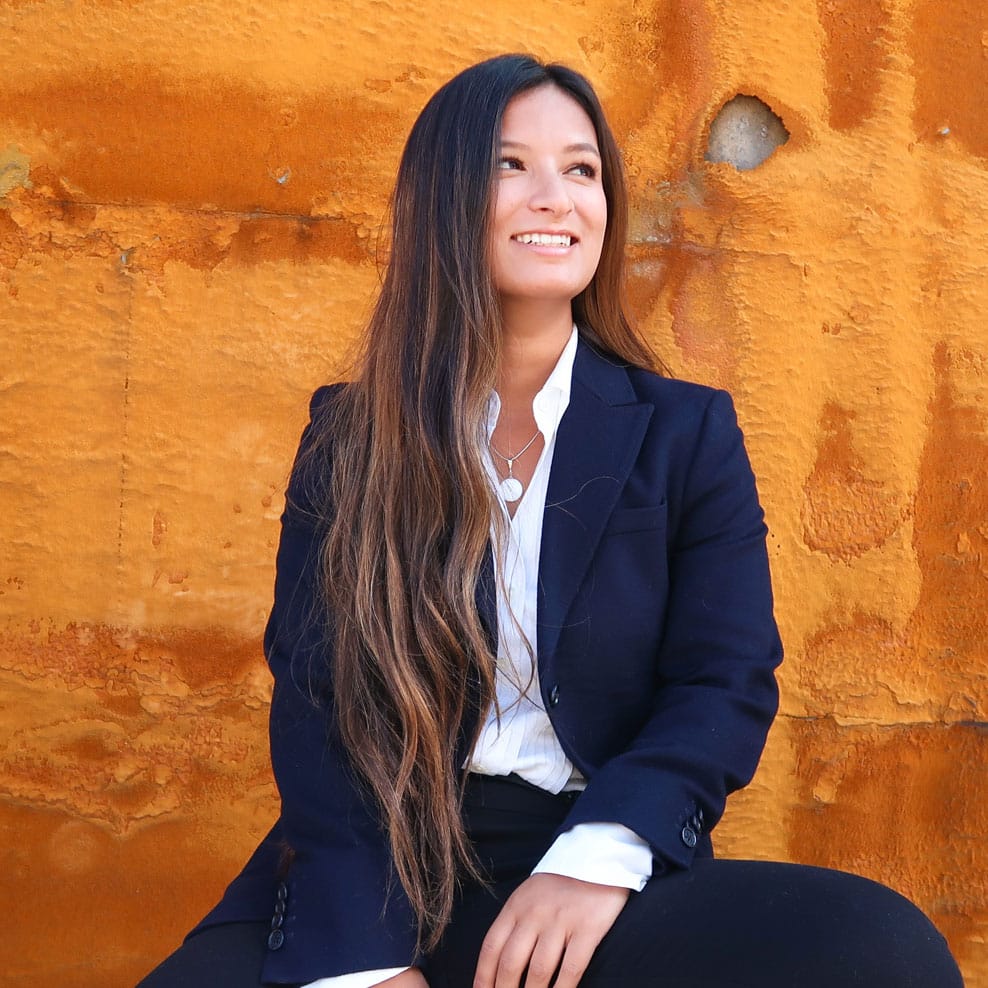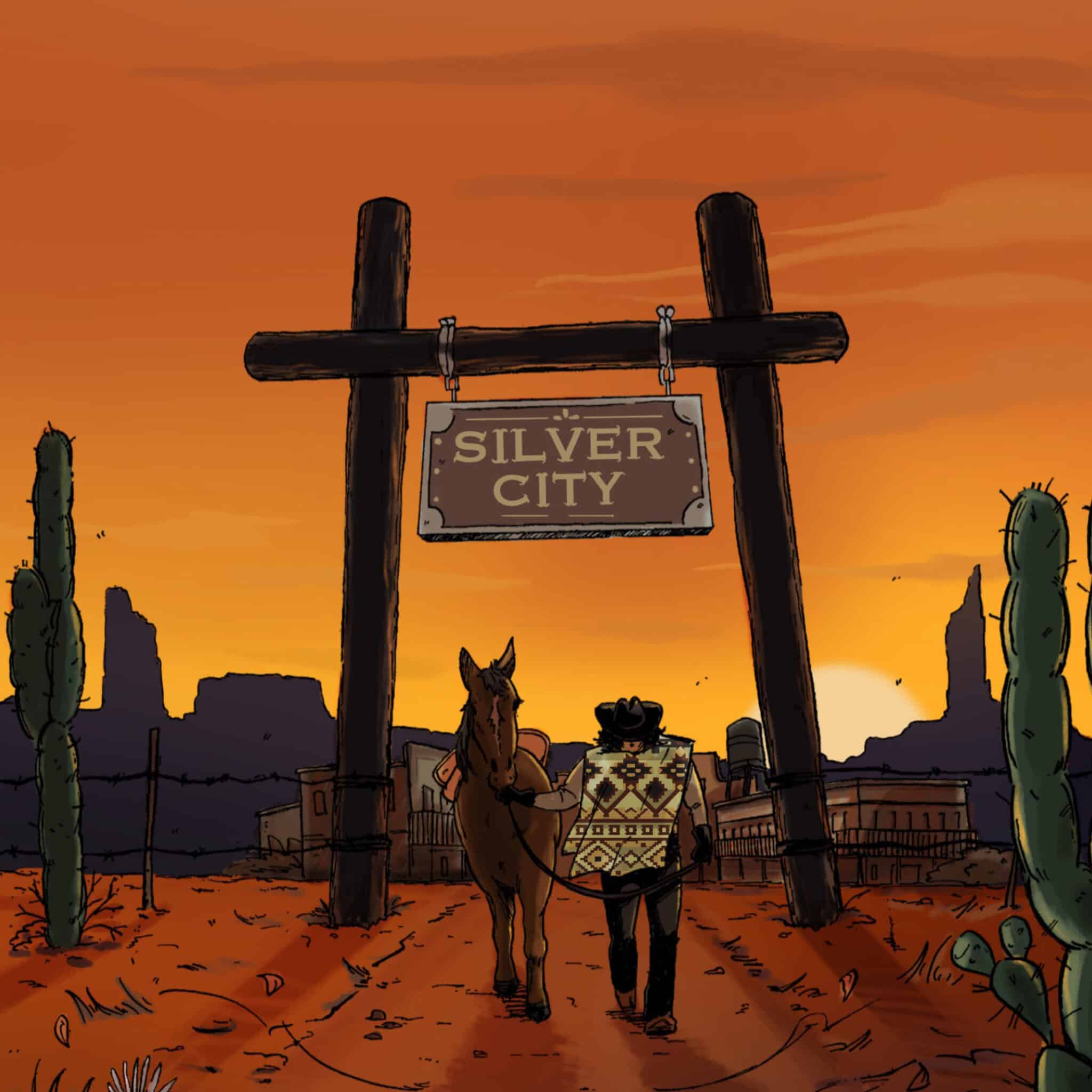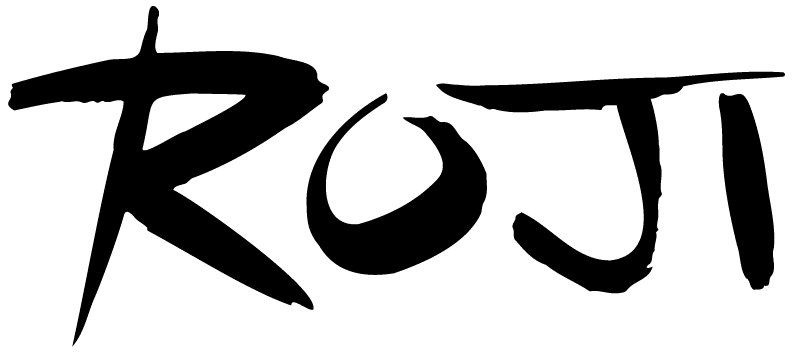For the past two decades plus, few artists from within the modern reggae scene have brought me more enjoyment than roots and dub outfit 10 Ft. Ganja Plant. A big part of their vintage sound stems from the work of Craig “Dubfader” Welsch, who serves as their drummer and engineer and at different times has previously applied his talents to enhance the live shows of John Brown’s Body and Slightly Stoopid as front-of-house sound.
For this reason, whenever I see the name Craig Welsch affiliated with a project, it immediately commands my attention. Recently, my buddy James Pasqua, who co-hosts the podcast, A Conversation in Dub, turned me on to an EP mixed by Welsch by an artist named ROJI titled, The Gunman of Silver City.
While the ROJI EP brings the feels with a fusion of dubby reggae and rock they’ve aptly coined “Spaghetti Western Dub,” what makes this album so unique is that it is the soundtrack to a musicomic, pairing together the music with a narrative told through a comic book. The visionary behind this imaginative multimedia project is Jake Pardee, a Berklee-educated, Massachusetts-based freelance guitarist, music teacher and musical director who owns a production facility just northeast of Boston named Maritime Music Studio.
To quote the ROJI website, The Gunman of Silver City “invites audiences on an immersive journey through dynamic storytelling and evocative musical compositions,” an “epic adventure set against the backdrop of the Old West’s twilight era…a tale of redemption, escape from violence, and the quest for a new life filled with intrigue and mystique.”
With five tracks spanning just under 18 minutes, The Gunman of Silver City soundtrack kicks off with a track titled “The Last Gunfight.” The song opens slowly and sparsely with a foreboding, reverberating synth tone punctuated by sharp dub effects that emulate gunshots, artillery that sounds more like weapons out of Star Wars than a John Wayne film. This is an important distinction because it foreshadows how the setting of the story will eventually change; Pardee has stated that The Gunman of Silver City actually serves as a prequel to the overall story, which will ultimately take the protagonist into other realms not on this earth.
Setting up the narrative, through spoken word vocals, Pardee informs listeners that the gunman finds himself at an inflection point: “Our story begins with a man at a crossroads of karmic evolution…having made a name of himself as a killer of wanted men, our man now has to choose between continuing to bleed and be bled, to live and die by the gun, or to disappear and become a memory…”
Minus the vocals, perhaps unsurprisingly “The Last Gunfight” brings to mind the vintage roots reggae of 10 Ft. Ganja Plant.
The next track, “Leaving Silver City,” leaves the reggae genre for groovy, somewhat psychedelic number that Pardee calls a “funky earth jam.” According to Pardee, the track was inspired by Talking Heads and Paradise Bangkok Molam International Band. “I like those repeating figures. I’m into bands like Neu! and Stereolab so there’s a bit of that in there with the trance-like repetition.”
The percussion in “Leaving Silver City” cleverly calls to mind the chugging of an old steam locomotive, an image eventually cemented by the overt sound of a train whistle, which of course plays to the first panel in the corresponding page of the comic which features a drawing of a train crossing the desert.
This brings up the question, with both a print and digital version of the comic available, how does Pardee ideally envision or intend for people to consume The Gunman of Silver City?
“Ideally, in the future, a person will place a vinyl record on a turntable, open up the print copy of the musicomic and be swept into an analog multimedia universe of imagination,” Pardee told me. “For now, a print copy plus streaming sites works well and the comic can be viewed digitally, too. If listeners have the Canvas feature enabled on Spotify, they’ll see the artwork right alongside the tracks in the app.”
After “Leaving Silver City,” fans following this path will turn to page three and see that the gunman has made a stop in a tropical seaside village, where he bellies up to a bar for a drink. The corresponding song is titled, “A Stop Along the Way,” an old-school dub style jam with dreamy vocals enhanced by the presence of a trumpet and harmonica, which gives it that good old western feel.
From here, our hero boards a ship as evidenced by the fourth track, “The Voyage at Sea,” sort of a proto-punk/garage rock song. Pardee said he went for a more “aggressive rock” sound to help portray the gunman’s rough time at sea. “I asked our drummer Sam Ward to essentially play a solo for the length of the song and to have it increase in intensity throughout,” he told me. “The repeating piano note mimics a bit of The Stooges, which I was going for.”
Finally, the EP wraps up with an uplifting, instrumental reggae track titled, “Arrival in Paradise.” Its cheerful melody fits the narrative perfectly as the protagonist, his perilous journey completed, finds himself on a quiet, palm-lined beach alongside turquoise water. The song features layered guitar tones, one of which sounds kind of like a ukelele. “That is nylon string guitar doubled with a synth and then tripled with a marimba software synth,” Pardee revealed. “The way it works is I write a melody in the computer with a midi instrument and then I replace it with real instruments, or in this case, I kept the midi and used it to trigger both a real synth and to play a virtual marimba. Then all three are blended together to create that sound.”
Altogether, The Gunman of Silver City is an enjoyable listen and should stoke curiosity about what’s to come later in the ROJI series.
A project this ambitious and imaginative deserves some deeper digging, so I connected with Pardee to learn more about his background and how he conceived and achieved his musicomic.
RF: Tell me a little bit about your background i.e. where you grew up and/or have lived as well as your journey as a musician from your introduction to playing through this project.
Pardee: I grew up in a seaside town north of Boston called Rockport, Massachusetts. I’m part of a musical family and some of my earliest memories are listening to Jimi Hendrix, Bob Marley, and Miles Davis. As a teenager, I played in rock bands and studied jazz with a few excellent teachers. I attended Berklee College of Music where I studied performance, production, and music business. After college, I started backing various artists, building my studio, and teaching music lessons.
Now, I own Maritime Music Studio where I teach students and record a variety of different artists. Some highlights of the last year are dubplates with dancehall legend Sister Nancy, voiceover work for Discovery Channel, and the new ROJI music. I’ve worked with Wade Dyce and Cultural Roots for several years now as music director and guitarist. I continue to perform professionally as a freelance guitarist, too. This year I did a week-long run with Mean Girls on Broadway in Florida and I’m also the director of the Rockport Acoustic Music Festival, which is in its 44th year.
I’ve been creating demos and working on the sound of ROJI for about 10 years while building Maritime and getting my music production skills together. The first ROJI release was “New Board” back in 2015, so I’m excited it’s all still coming to fruition.
RF: When did you first conceive the ROJI musicomic and how long have you been working on it?
Pardee: The bulk of the big-picture story came to me in a flash while shoveling snow about 8 years ago, and the idea of turning it into a musicomic came into play about a year ago.
Over the years, the story existed mostly as a long rant I shared with friends on road trips. The original idea was to make a single concept album, and Craig Welsch ultimately encouraged me to make it a serialized work. So, I’ve been working on the music and story for about eight years, and The Gunman of Silver City specifically took about one year.
RF: I don’t know if this is a new trend but this is actually the second time I have come across an idea like this. As I had written about in my Artist Spotlight article on Dub Propulsion, they had created a comic book to accompany purchases of their Jahzilla vs. the Dub Serpent EP.
Pardee: That’s super cool! I hadn’t heard about Jahzilla vs the Dub Serpent, that’s a great idea. The ROJI Saga was conceived from the start as a complete story with both music and visuals. My friend Michael Lamarche and I have often discussed making it an animated film over the years. The idea for turning it into a musical comic book came after being introduced to Veronica Funk and her artwork. I’m also inspired by the rich history of comic style album artwork from artists like Tony McDermott. I‘m fortunate to work with Wade Dyce of Cultural Roots and Tony McDermott created the artwork for their album, Hell a Go Pop.
RF: Was the comic part simply a way to call more attention to the musical release or vice versa?
Pardee: I think that’s a bonus! My friends and I are definitely excited about attending comic-con’s as musicians and bringing comics to gigs.
Since the comic and the music are each half of the story, neither was necessarily created to promote the other as much as they are meant to be a single work. I think it’s a bit analogous to a movie and its soundtrack. The original work is a combination but they can be appreciated separately, too.
RF: How did you come up with the name ROJI – is there meaning behind it?
Pardee: I believe it was a spontaneous inspiration that sounded good and we later learned the word meant the garden leading to a tea ceremony in Japanese. I’m not 100% sure. The one consistent thing is it is always stylized in capital letters.
It’s also an acronym for whatever you’d like it to be. Today I’m partial to Realization of Joyful Intuition. It could also mean Rhythm of Jake’s Imagination or Raccoons of Jupiter’s Interior.
RF: How did you choose a western motif as opposed to another setting for your story?
Pardee: I’m a fan of Westerns in general and like how the movies present ethical dilemmas. They often are about peace in one way or another – seeking it, preserving it. I like antiheroes, flawed characters trying to do right. It feels very human.
Stylistically, I’m a fan of Ennio Morricone, the famous Italian composer who scored films like The Good, The Bad and The Ugly. I specifically like the guitar work and ambience in his soundtracks. I feel a strong connection between the atmosphere of Morricone and dub.
Reggae and western themes have been linked here and there throughout history, too. I think there’s a cool factor that gunfighters have, a certain amount of rebellion and isolation from society that I think aligns a bit with reggae and rock n roll. There’s definitely something there connecting those elements together.
Sadly, gun violence has ended the lives and careers of many of the greatest reggae artists. Our character, the bounty hunter, is looking to leave his life of violence behind.
RF: While I had collected comics as a youth and have always found them one of my favorite mediums, I have not kept up with the industry. Are there specific artists or writers that ROJI took inspiration from or pays homage to?
Pardee: Veronica has drawn inspiration from a variety of American traditional and Japanese Manga styles, she studied Sequential Art at Savannah College of Art and Design and has developed her own style over the years.
While creating Volume 1, we referenced a few Image comics in particular – East of West and Saga. I also went out and collected a bunch of Western themed comics – old Roy Rogers, Kid Colt, I have a bunch of Ghost Rider which has a western origin, too.
RF: How did you link with Veronica Funk to do the art, and how much direction did you give her? Was the direction more regarding artistic style or what to include in the narrative, or a combination of both?
Pardee: Veronica is from my hometown, and she had originally contacted me about guitar lessons, so that’s how I found her comic portfolio. I told her I’d love to create a music-meets-comic project someday, and the stars started to align.
When we began working on Volume 1 in earnest last year, we discussed the entire ROJI Saga and how to establish the themes and style from the beginning. I trusted her instincts about the specifics about how the characters should look, the layout, and what the aesthetic should feel like.
The opening track The Last Gunfight has spoken word narration and the rest of the tracks are more like the Gunman’s inner monologue. Veronica and I had to decide together which elements would be in either the music or the artwork.
RF: The majority of The Gunman of Silver City soundtrack is dub reggae, which of course is what has drawn my personal interest. How did you decide on that style of music to tell your story? I see that the project is dedicated to Scratch, so I assume you have been a fan of the genre for some time? What other musical artists have been an inspiration for your music?
Pardee: Absolutely! I got into dub as a teenager and began buying CD’s from local shops in Boston. As a kid I listened to Bob Marley, Peter Tosh, Sublime, Long Beach Dub Allstars – then as a teen I began collecting 10 Ft. Ganja Plant and John Brown’s Body, some UK artists like Bush Chemists and that all led me through the history towards King Tubby.
Lee Scratch Perry has been a major influence as a dub pioneer, visual artist, and philosophical renegade. His freedom of expression and commitment to following his spirit and intuition are what I appreciate most about Scratch. I was fortunate to meet him at a show with Subatomic Soundsystem. Emch brought me backstage and I asked Scratch to sign my Roland Space Echo which he was very kind to do.
Other influences that can be heard on The Gunman of Silver City include some Talking Heads, Jeff Beck, The Shadows, and I really like Molam music from Laos/Northern Thailand which influences “Leaving Silver City” a bit. There’s also a repeating piano note in “The Voyage at Sea” that’s a nod to “Now I Wanna Be Your Dog” by The Stooges.
RF: How did you choose to work with Craig Welsch for this? (Another reason I took interest in this as I am a huge fan of 10Ft. Ganja Plant and other work he’s been involved with.) How did you feel about working with him?
Pardee: I really like Craig Welsch’s production across his discography. 10 Ft Ganja Plant is one of my favorite bands, so working with Craig is a great honor. We had the first chance to produce a track with Craig with our band Pier Ave. Since then, I have been a bit of a dub padawan of Dubfader, and I’m fortunate to call him a friend and mentor.
Working with Craig is very interesting because he brings all of his creative powers to every mix. Craig often reminds me of Lee Perry, he has that fearless way of trusting his instincts and making decisions with the music. It all happens pretty quickly once he gets going, it’s exciting to be a part of.
RF: Are the other players of instruments involved in ROJI music members of bands within the modern reggae/ska/dub scene by any chance?
Pardee: Yes, I’m grateful for the Boston reggae scene – we have opportunities to meet and play with many amazing artists! We all play together in various roles in the scene, often with Wade Dyce of Cultural Roots and our group Pier Ave. Our drummer Sam Ward is out in Las Vegas, he plays with several major label artists.
RF: What has been the greatest challenge or obstacle you’ve encountered in bringing this to fruition?
Pardee: The greatest challenge has been creating the conditions for the work to be made. The years of learning the craft and building a team with a shared vision – laying the foundation for everything, learning to be patient. Then it’s getting takes that have the right energy and feeling.
RF: Since ROJI is an actual printed comic in addition to the digital version, how do you ideally envision or intend for people to consume it?
Pardee: Ideally, in the future, a person will place a vinyl record on a turntable, open up the print copy of the Musicomic and be swept into an analog multimedia universe of imagination.
For now, a print copy plus streaming sites works well and the comic can be viewed digitally, too. If listeners have the Canvas feature enabled on Spotify they’ll see the artwork right alongside the tracks in the app!
RF: There seems to be more planned but what kind of timeframe should fans expect from release to release? Are there future editions already produced (written/drawn and also recorded/mixed, etc) and ready to release or are you creating this as you go? If the latter, I have to assume it will take a considerable amount of time for each one to be completed. Along those lines, I also assume the music aspect takes the longest to create?
Pardee: Volume 2 is in production currently and will be released in the first half of 2024.
Currently, we are planning for two per year and plan to increase that to four.
I’m working on the tunes at Maritime and we record when schedules align, like when Sam Ward is home visiting family.
There are dozens of songs and demos that have been written for the story over the years so a bit of it is a logistical challenge of organizing everything – which tunes in which volume, how to split up the story so it’s engaging and goes along at a good pace.
Then there is the fundraising in order to pay for the post-production of the music, the artwork, printing, and marketing. That takes time and effort.
RF: Do you plan to monetize ROJI and if so, how?
Pardee: Yes, through merchandise and memberships within the ROJI Universe. Since the ROJI Saga is planned so far into the future, right now the focus is on creating a sustainable method to continue the series. It’s a balancing act deciding what to allocate funds for. The marketing budget doesn’t really exist yet so I’m very grateful for friends sharing the music and any organic reach we can get.
The Gunman of Silver City is available for purchase now and soon we’ll release special prints, variant covers, and collectibles. Each volume is intended to fit on a single side of a vinyl record – Volume 1 on Side A and Volume 2 on Side B with a musicomic inside the sleeve.
Once we have the next few issues ready for release, we will launch membership access to the ROJI Universe so members get the musicomics delivered as they are released, plus bonus goodies, secrets about the ROJI Saga, tickets to listening parties, things like that.
RF: Is there anything additional you’d like to share that I may not have thought to ask about?
Pardee: Mostly I want to say thank you for listening and for your thoughtful and considerate questions.
I’ll give one tidbit of a ROJI Saga secret away: Volume 1 is part of the prequel to the main story. We won’t stay in the Old West (or on Earth) forever.
I’d also like to add: Big up Rootfire for all of your work in supporting the music and the scene. Big up James and A Conversation in Dub for putting us in touch.
And a massive thank you to everyone who lovingly creates and contributes to the appreciation of reggae music.
All things are possible when we work together!
Follow ROJI:
